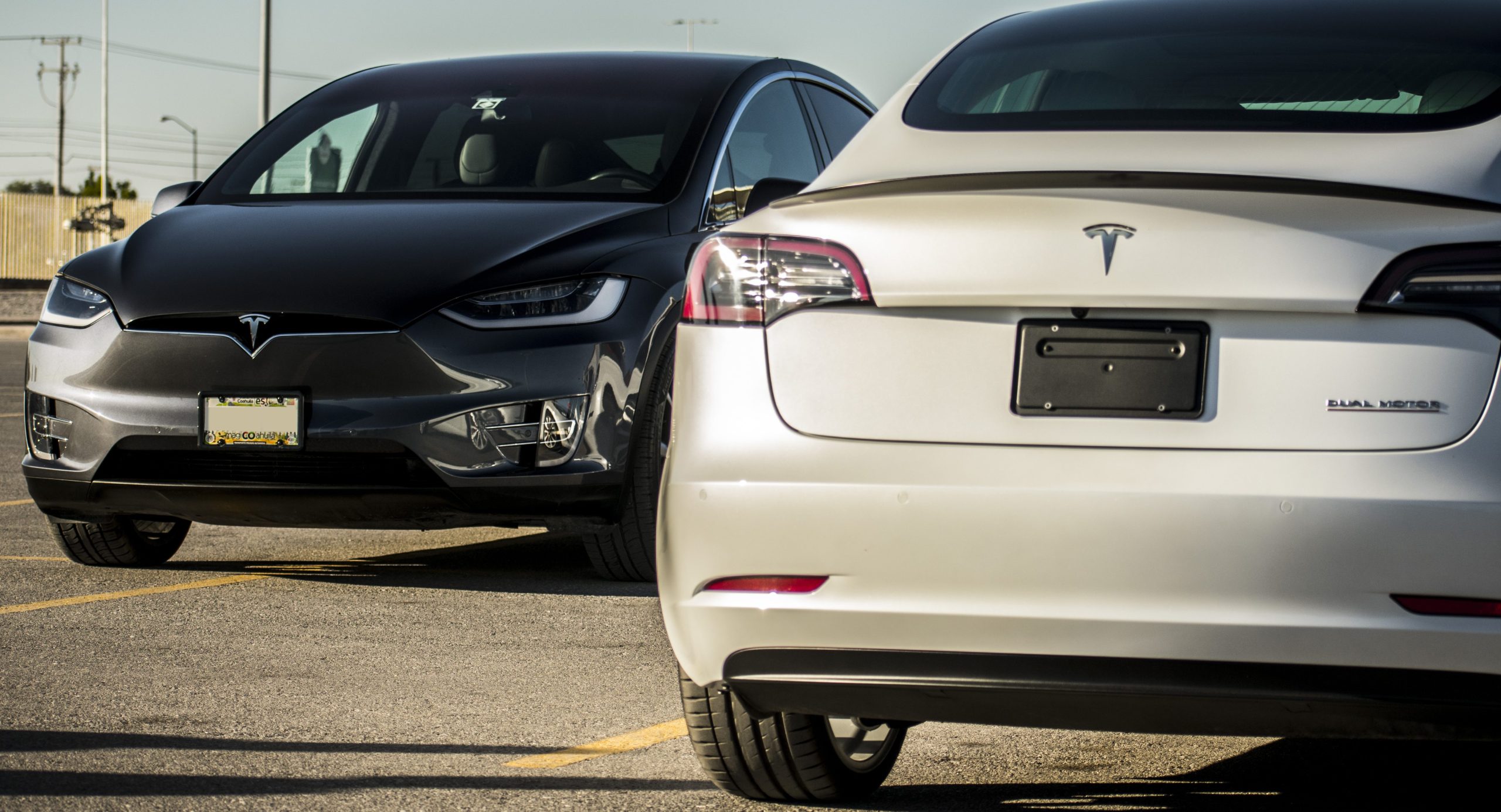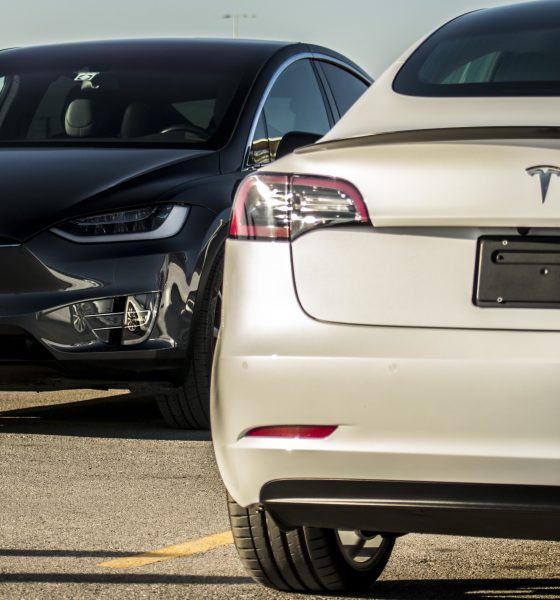Tesla recently published its Q4 2019 Vehicle Safety Report and it puts on the spotlight that accidents involving Teslas are still rarer compared to other vehicles on the road.
Tesla’s Vehicle Safety Report for Q4 2019 revealed that a Tesla on Autopilot was involved in one accident for every 3.07 million miles driven. For those without Autopilot but use the active safety features of the vehicle, there was one accident per 2.10 million miles driven. Tesla owners who do not use Autopilot and other active safety features were involved in one accident for every 1.64 million miles driven. Overall, these numbers are far better than what’s been recorded by the National Highway Traffic Safety Administration (NHTSA) which indicates there being one automobile crash in the United States every 479,000 miles.
The Q4 accidents involving Teslas are a bit higher compared with the previous quarter when it registered one accident for every 4.34 million miles for those using Autopilot. Those who do not have the Autopilot engaged but use active safety features were involved in one accident per 2.19 million miles driven. Those who do not use Autopilot and active safety features of Teslas were involved in one road mishap per 1.41 million miles.
The apparent decline in the safety statistics can be attributed to the time of the year when the roads are busier because of several holidays such as Thanksgiving and Christmas Day in the United States. Weather can also be a factor that may have worsened driving conditions. However, one still cannot deny that the numbers are impressive as driving with Autopilot engaged is still more than six times safer than the average, and driving without Autopilot or active safety features is still three to four times safer compared to the average.
“Accident rates among all vehicles on the road can vary from quarter to quarter and can be affected by seasonality, like reduced daylight and inclement weather conditions,” Tesla’s microsite on Vehicle Safety Report reads. “Model S, Model X and Model 3 have achieved the lowest probability of injury of any vehicle ever tested by the U.S. government’s New Car Assessment Program.”
In terms of vehicle fire data, the electric car manufacturer summarized that between 2012 and 2019, there’s only one Tesla vehicle fire for every 175 million miles traveled. In contrast, there’s one vehicle fire reported by the U.S. Department of Transportation and the National Fire Protection Association (NFPA) for every 19 million miles traveled. This is an improvement compared to the 2012-2018 Vehicle Fire Date where Tesla registered one vehicle fire for every 170 miles traveled.
Tesla vehicles are among the safest cars in the world today. For example, Tesla Model 3 earned an overall rating of 5 stars in the NHTSA 2019 safety rating. The mass-produced electric sedan, together with its Model X sibling, also took top honors in Euro NCAP’s Best in Class Cars 2019 List.
With the improvement of the Autopilot and the Full Self-Driving capabilities of Teslas, we can only expect these Tesla safety statistics to improve and this will eventually lead to safer roads for other vehicles and for pedestrians as well.
You can read Tesla’s Q4 2019 Vehicle Safety Report below:
Accident Data
In the 4th quarter, we registered one accident for every 3.07 million miles driven in which drivers had Autopilot engaged. For those driving without Autopilot but with our active safety features, we registered one accident for every 2.10 million miles driven. For those driving without Autopilot and without our active safety features, we registered one accident for every 1.64 million miles driven. By comparison, NHTSA’s most recent data shows that in the United States there is an automobile crash every 479,000 miles.
Vehicle Fire Data

News
Tesla FSD fleet is nearing 7 billion total miles, including 2.5 billion city miles
As can be seen on Tesla’s official FSD webpage, vehicles equipped with the system have now navigated over 6.99 billion miles.

Tesla’s Full Self-Driving (Supervised) fleet is closing in on almost 7 billion total miles driven, as per data posted by the company on its official FSD webpage.
These figures hint at the massive scale of data fueling Tesla’s rapid FSD improvements, which have been quite notable as of late.
FSD mileage milestones
As can be seen on Tesla’s official FSD webpage, vehicles equipped with the system have now navigated over 6.99 billion miles. Tesla owner and avid FSD tester Whole Mars Catalog also shared a screenshot indicating that from the nearly 7 billion miles traveled by the FSD fleet, more than 2.5 billion miles were driven inside cities.
City miles are particularly valuable for complex urban scenarios like unprotected turns, pedestrian interactions, and traffic lights. This is also the difference-maker for FSD, as only complex solutions, such as Waymo’s self-driving taxis, operate similarly on inner-city streets. And even then, incidents such as the San Francisco blackouts have proven challenging for sensor-rich vehicles like Waymos.
Tesla’s data edge
Tesla has a number of advantages in the autonomous vehicle sector, one of which is the size of its fleet and the number of vehicles training FSD on real-world roads. Tesla’s nearly 7 billion FSD miles then allow the company to roll out updates that make its vehicles behave like they are being driven by experienced drivers, even if they are operating on their own.
So notable are Tesla’s improvements to FSD that NVIDIA Director of Robotics Jim Fan, after experiencing FSD v14, noted that the system is the first AI that passes what he described as a “Physical Turing Test.”
“Despite knowing exactly how robot learning works, I still find it magical watching the steering wheel turn by itself. First it feels surreal, next it becomes routine. Then, like the smartphone, taking it away actively hurts. This is how humanity gets rewired and glued to god-like technologies,” Fan wrote in a post on X.
News
Tesla starts showing how FSD will change lives in Europe
Local officials tested the system on narrow country roads and were impressed by FSD’s smooth, human-like driving, with some calling the service a game-changer for everyday life in areas that are far from urban centers.

Tesla has launched Europe’s first public shuttle service using Full Self-Driving (Supervised) in the rural Eifelkreis Bitburg-Prüm region of Germany, demonstrating how the technology can restore independence and mobility for people who struggle with limited transport options.
Local officials tested the system on narrow country roads and were impressed by FSD’s smooth, human-like driving, with some calling the service a game-changer for everyday life in areas that are far from urban centers.
Officials see real impact on rural residents
Arzfeld Mayor Johannes Kuhl and District Administrator Andreas Kruppert personally tested the Tesla shuttle service. This allowed them to see just how well FSD navigated winding lanes and rural roads confidently. Kruppert said, “Autonomous driving sounds like science fiction to many, but we simply see here that it works totally well in rural regions too.” Kuhl, for his part, also noted that FSD “feels like a very experienced driver.”
The pilot complements the area’s “Citizen Bus” program, which provides on-demand rides for elderly residents who can no longer drive themselves. Tesla Europe shared a video of a demonstration of the service, highlighting how FSD gives people their freedom back, even in places where public transport is not as prevalent.
What the Ministry for Economic Affairs and Transport says
Rhineland-Palatinate’s Minister Daniela Schmitt supported the project, praising the collaboration that made this “first of its kind in Europe” possible. As per the ministry, the rural rollout for the service shows FSD’s potential beyond major cities, and it delivers tangible benefits like grocery runs, doctor visits, and social connections for isolated residents.
“Reliable and flexible mobility is especially vital in rural areas. With the launch of a shuttle service using self-driving vehicles (FSD supervised) by Tesla in the Eifelkreis Bitburg-Prüm, an innovative pilot project is now getting underway that complements local community bus services. It is the first project of its kind in Europe.
“The result is a real gain for rural mobility: greater accessibility, more flexibility and tangible benefits for everyday life. A strong signal for innovation, cooperation and future-oriented mobility beyond urban centers,” the ministry wrote in a LinkedIn post.
News
Tesla China quietly posts Robotaxi-related job listing
Tesla China is currently seeking a Low Voltage Electrical Engineer to work on circuit board design for the company’s autonomous vehicles.

Tesla has posted a new job listing in Shanghai explicitly tied to its Robotaxi program, fueling speculation that the company is preparing to launch its dedicated autonomous ride-hailing service in China.
As noted in the listing, Tesla China is currently seeking a Low Voltage Electrical Engineer to work on circuit board design for the company’s autonomous vehicles.
Robotaxi-specific role
The listing, which was shared on social media platform X by industry watcher @tslaming, suggested that Tesla China is looking to fill the role urgently. The job listing itself specifically mentions that the person hired for the role will be working on the Low Voltage Hardware team, which would design the circuit boards that would serve as the nervous system of the Robotaxi.
Key tasks for the role, as indicated in the job listing, include collaboration with PCB layout, firmware, mechanical, program management, and validation teams, among other responsibilities. The role is based in Shanghai.
China Robotaxi launch
China represents a massive potential market for robotaxis, with its dense urban centers and supportive policies in select cities. Tesla has limited permission to roll out FSD in the country, though despite this, its vehicles have been hailed as among the best in the market when it comes to autonomous features. So far, at least, it appears that China supports Tesla’s FSD and Robotaxi rollout.
This was hinted at in November, when Tesla brought the Cybercab to the 8th China International Import Expo (CIIE) in Shanghai, marking the first time that the autonomous two-seater was brought to the Asia-Pacific region. The vehicle, despite not having a release date in China, received a significant amount of interest among the event’s attendees.










